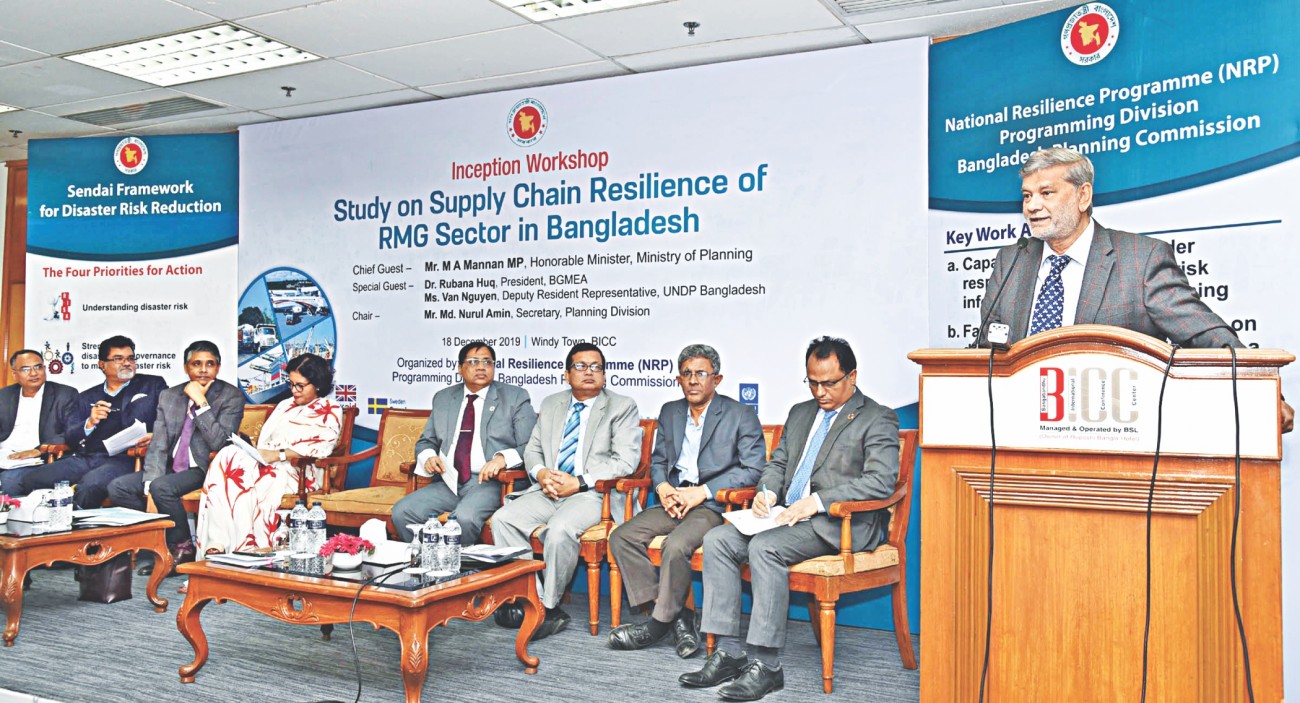Resilient supply chain needed to cut economic losses from disasters

Bangladesh needs to put in place a supply chain that is resilient to natural calamities and the impacts of climate change in order to cut economic losses stemming from disasters, said experts and entrepreneurs yesterday.
They said economic costs of natural disasters are high due to a lack of resilience to climate change and natural calamities, so the time is right to assess the disaster risks in industries and promote business continuity plan in order to minimise the risks.
The floods of 1987, 1988, 1998, 2004, and 2007 inflicted a loss of $8.4 billion on the economy, while cyclones Sidr, Aila and Bulbul caused a loss of around $6.5 billion, according to an inception of the study on the supply chain resilience of the RMG sector in Bangladesh.
It was presented at a workshop at the Bangabandhu International Conference Center in Dhaka. The programming division of the planning commission is carrying out the study under the National Resilience Programme (NRP) of Programming Division of the Planning Commission.
The study will cover the present status of disasters and climate risks in the garment sector supply chain, impact of disaster risks in supply chain, and how the risks can be minimised.
A supply chain includes facilities, function and activities that are involved in producing and delivering a product.
Speaking at the event, Planning Minister MA Mannan said not only garments but pharmaceuticals and agricultural sectors also need a strong supply chain to post higher growth.
“However, we have resource constraints and other challenges. We need adequate infrastructure to maintain a good supply chain.”
He said the government has built many infrastructures and is thinking of building an expressway as alternative to single-road Dhaka-Chattogram highway.
Reza Md Shehab Uddin Sharawardi, vice-president of the Bangladesh Supply Chain Management Society, said there is only one road that connects Dhaka with the Chattogram port and the reliance on a single road is risky.
“We need more ports to meet higher export and import within a short time. These play a vital role in reducing lead time of exports,” he said, adding Bangladesh needs to emphasise on building human capital.
Bangladesh’s export lead time is 90 to 120 days, opposed to 19-45 days in Sri Lanka, 40-50 days in China, and 50-70 days in India, according to the inception of the study.
Rubana Huq, president of the Bangladesh Garment Manufacturers and Exporters Association (BGMEA), said supply chain management and resilience needs in all sectors, not only in the garment sector.
Moreover, the garment sector has taken many steps in the last few years. However, small and medium companies are at risk. “So, they should be taken into account,” she added.
Md Mohsin, additional secretary of the disaster management and relief ministry, said Bangladesh has been successful to reduce life-loss in natural disasters. However, economic loss is still a subject of thinking, he said.
Md Nurul Amin, secretary of the Planning Division, said the country is developing its own resilience system to tackle natural disasters.
“In supply chain management, we are trying to ensure more infrastructures,” he said, adding the government has built Payra port, which is very developed.
The government is expanding the capacity of the Hazrat Shahjalal International Airport. A new airport will also be built.
Md Khalilur Rahman Khan, chief of the planning division, said investment, modern technology, institutional capacity, human capital and coordination among all government divisions are necessary to have a sustainable resilience.
The study should recommend a guideline and a monitoring system, he said.
Mohammad Khorshed A Khastagir, director general of the foreign affairs ministry, Md Khurshid Alam, assistant representative of the UNDP Bangladesh, and Asif Ibrahim, a director of the BGMEA, took part in the discussion.
Nurun Nahar, deputy chief of the programming division and project director of the NRP, also spoke.
